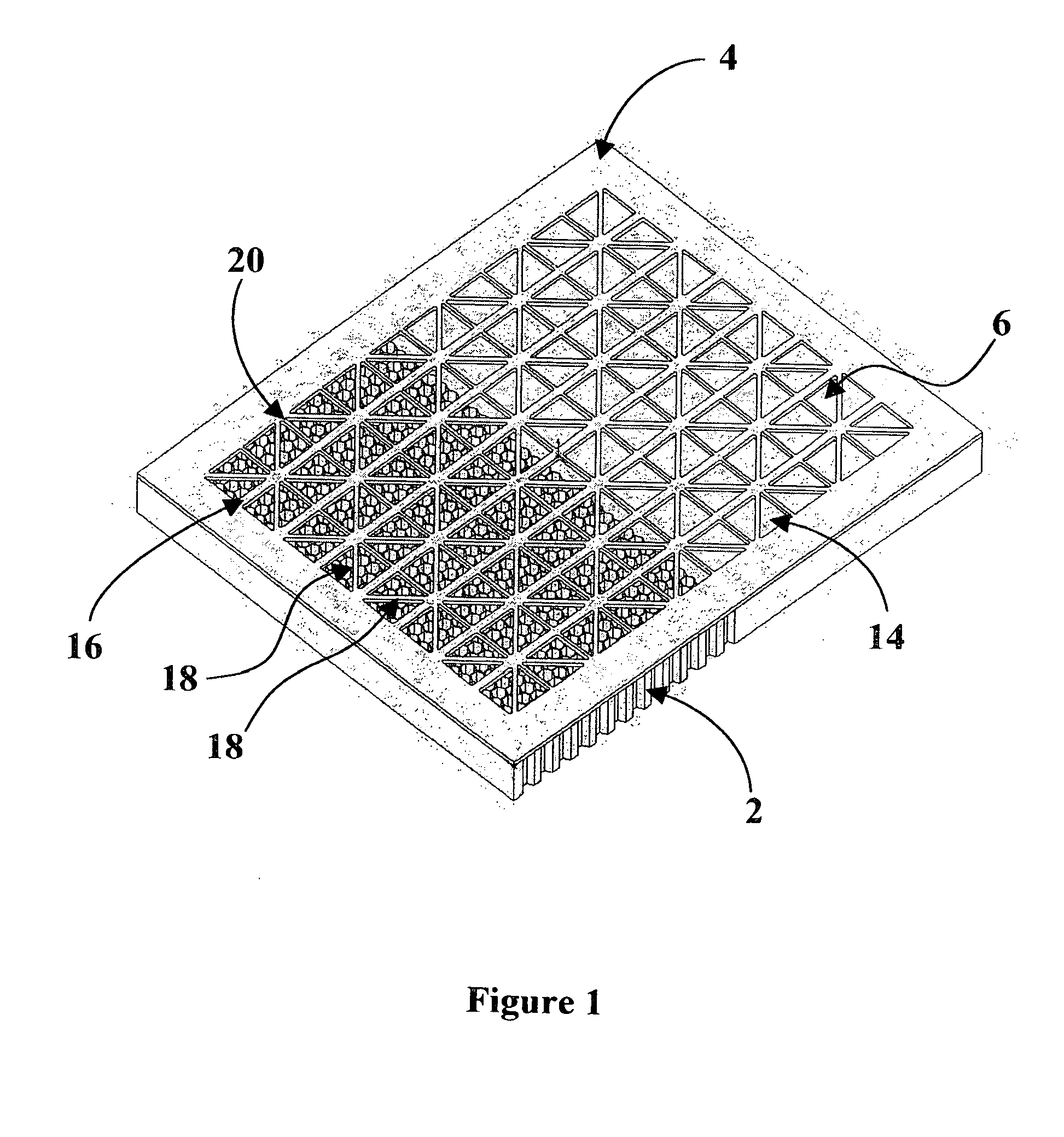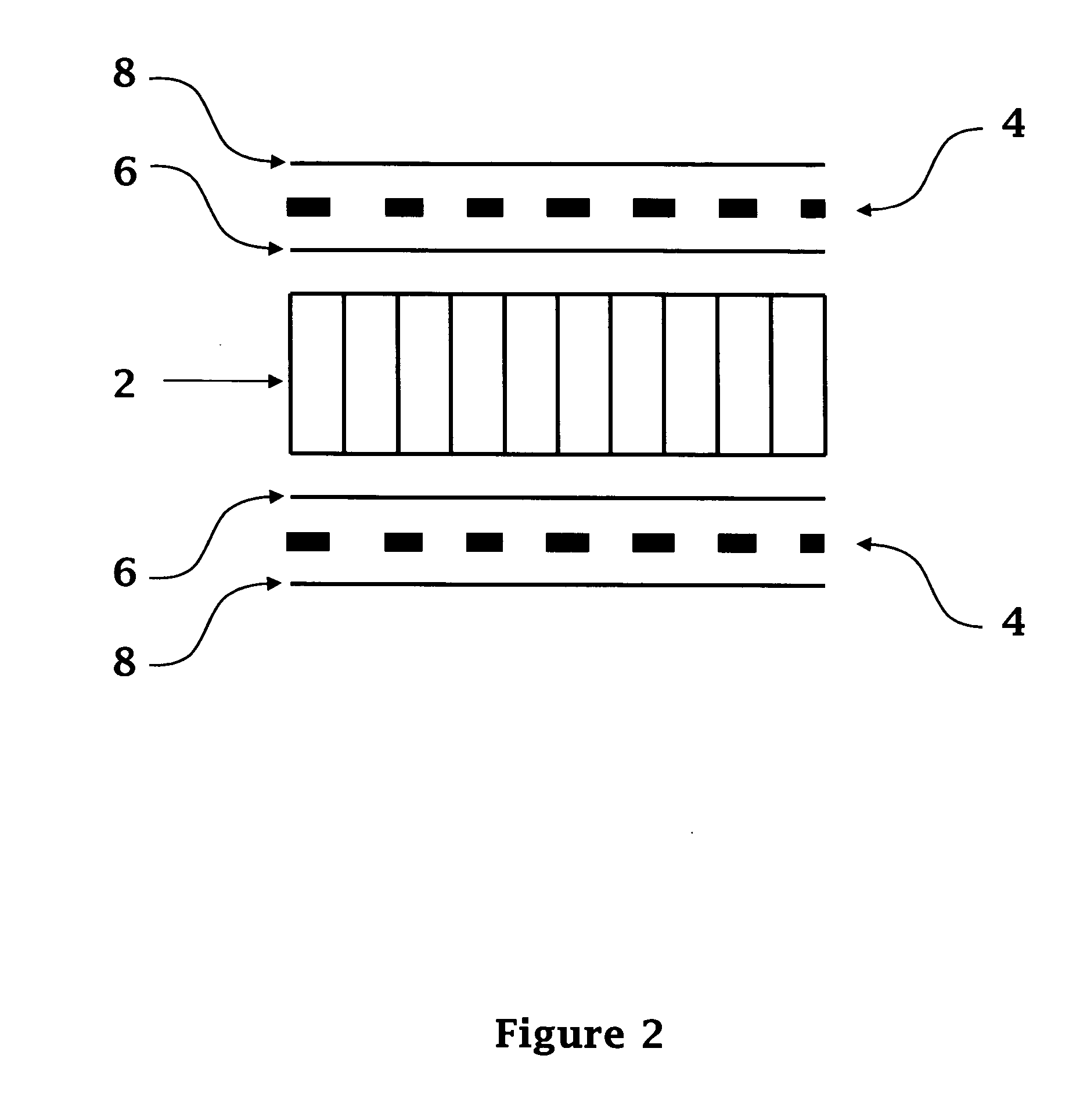Rigid patient support element for low patient skin damage when used in a radiation therapy environment
a patient support and radiation therapy technology, applied in the direction of patient positioning for diagnostics, applications, furniture parts, etc., can solve the problems of high skin dose and skin damage of patients, inability to provide the precise positioning required for state of the art treatment techniques, and inability to meet patient support surfaces and devices. to achieve the effect of reducing skin burns and skin damag
- Summary
- Abstract
- Description
- Claims
- Application Information
AI Technical Summary
Benefits of technology
Problems solved by technology
Method used
Image
Examples
Embodiment Construction
[0024] Currently, the two most common constructions for Radiation Therapy (RT) patient tables and devices are; (1) continuous solid carbon fiber face sheets on a rigid foam core, and (2) a carbon fiber grid. The grid is generally produced from a flat sheet of carbon fiber (between 0.040″ and 0.250″ think) through which a repeating pattern of square or round holes is cut. The grid provides superior performance when compared to a rigid foam core construction because it produces less electron scattering. However, the grid systems are much less stiff than the rigid foam systems.
[0025] The invention described allows structures with electron generation comparable to a grid to be built but at an order of magnitude higher stiffness than a grid system. The invention can provide stiffness comparable to a rigid foam structure. FIG. 3 illustrates the dose versus depth curve for a one inch and three inch sample of the present invention compared with a sample with structural integrity of a compl...
PUM
 Login to View More
Login to View More Abstract
Description
Claims
Application Information
 Login to View More
Login to View More - R&D
- Intellectual Property
- Life Sciences
- Materials
- Tech Scout
- Unparalleled Data Quality
- Higher Quality Content
- 60% Fewer Hallucinations
Browse by: Latest US Patents, China's latest patents, Technical Efficacy Thesaurus, Application Domain, Technology Topic, Popular Technical Reports.
© 2025 PatSnap. All rights reserved.Legal|Privacy policy|Modern Slavery Act Transparency Statement|Sitemap|About US| Contact US: help@patsnap.com



